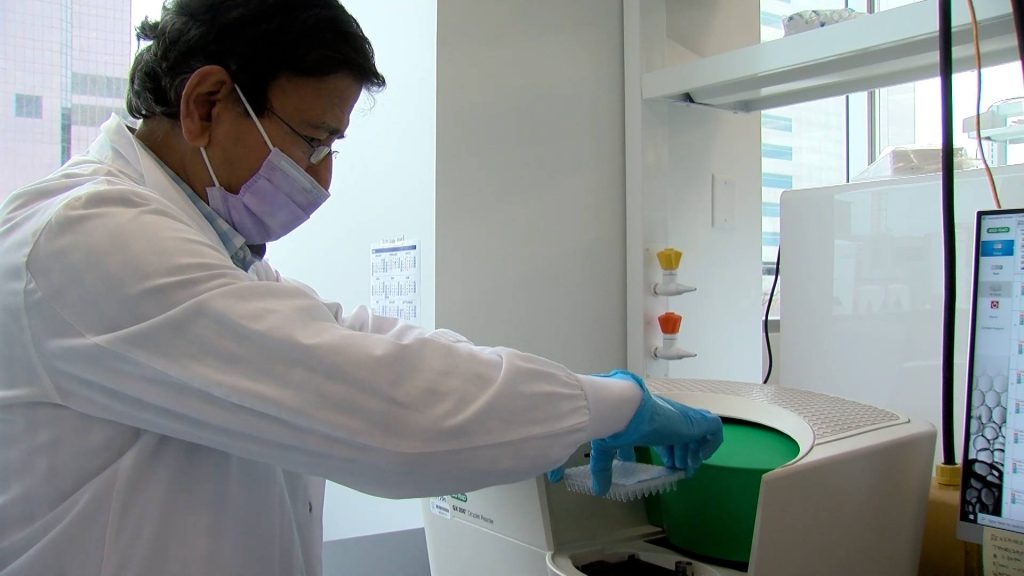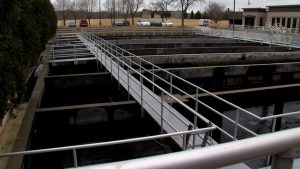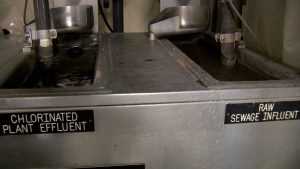-
Testing wastewater for COVID-19: The clearest path to understanding community infection

Tracking the presence of SARS-CoV-2, the virus that causes COVID-19, in wastewater samples is the latest public health tool that cities around the U.S. are using to better understand COVID-19's spread in a community. Mayo Clinic is collaborating with The City of Rochester, Minnesota; Olmsted County Public Health; and University of Minnesota Rochester on the Olmsted County COVID-19 Wastewater Project to do just that.
Watch: Testing wastewater for COVID-19: The clearest path to understanding community infection
Journalists: Broadcast-quality video (2:01) is in the downloads at the end of this post. Please "Courtesy: Mayo Clinic News Network." Read the script.
"If COVID-19 is found in wastewater, it's getting there because people in the community that have the virus are actually shedding some of it," says Dr. Ann Moyer, a Mayo Clinic molecular genetic pathologist.
Because not everyone who has COVID-19 is tested or has symptoms, wastewater surveillance can capture the presence of the COVID-19 virus shed by people with and without symptoms, giving a more accurate picture of how much virus is in the community.

The process starts here at Rochester Public Works in Rochester, Minnesota.
"We collect wastewater from the entire city of Rochester, so about 110,000 to 115,000 people. All that wastewater comes here. And we can take one sample, we do some initial processing and then we hand it off to Mayo."
"You know, they’re the backbone of what we’re doing here.”
Mayo Clinic labs don't actually test the water for the SARS-CoV-2 virus itself, they test for a particular gene that's extracted from the sample. They do so using droplet digital PCR analysis.
"It's very sensitive, and it's quantitative."
Mayo Clinic molecular genetic pathologist, Dr. Ann Moyer.
"We can measure the amount of RNA that's in the wastewater using that technology. So, we're really measuring the amount of viral RNA rather than the amount of total virus."
Here is the latest graph which shows the SARS-CoV-2 RNA levels have dramatically decreased since the beginning of 2022 when it was very high due to the omicron surge.
"In addition to just knowing what's going on, it's useful because if you see the cases or the amount of virus that's in the wastewater increasing, then that might suggest that more patients might need to seek medical care soon, because there's more community transmission."

Meaning it could help predict future COVID-19 surges.
"I think it's just that it's a really interesting, new technique. And it's something we couldn't have probably done five or 10 years ago."
"Now that we've got this process set up, which involves going from collecting the wastewater to extracting the viral RNA to testing it, we could definitely use the same process again, and just put a different assay at the end to detect a different pathogen."
____________________________________________
For the safety of its patients, staff and visitors, Mayo Clinic has strict masking policies in place. Anyone shown without a mask was either recorded prior to COVID-19 or recorded in a nonpatient care area where social distancing and other safety protocols were followed.
Information in this post was accurate at the time of its posting. Due to the fluid nature of the COVID-19 pandemic, scientific understanding, along with guidelines and recommendations, may have changed since the original publication date.
For more information and all your COVID-19 coverage, go to the Mayo Clinic News Network and mayoclinic.org.Learn more about tracking COVID-19 and COVID-19 trends







